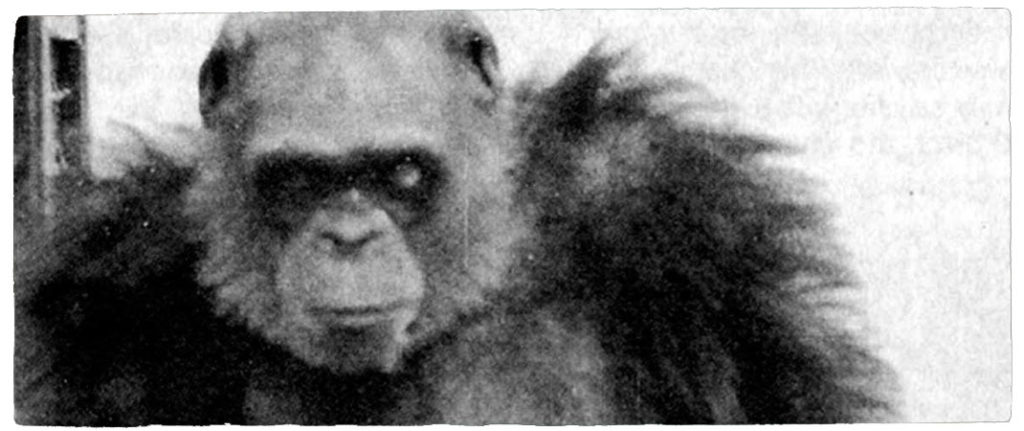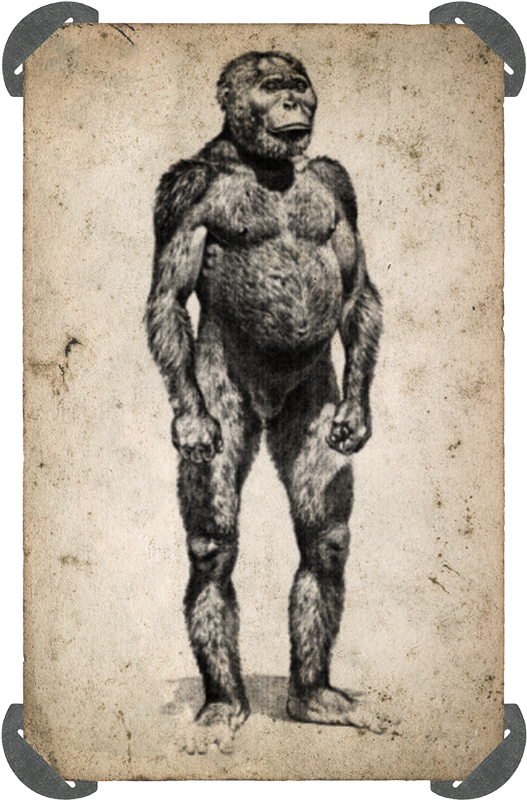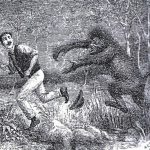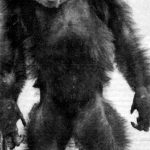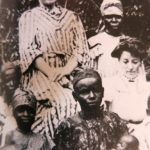The giant chimpanzees of Congo
1902
![]()
Expedition report by Lady Victoria Stanley
“The jungle still keeps great secrets from us”, I said, as I took the first step away from the well-trodden paths into the wild jungle. We were in the Congo, in a region around Bili and Bondo, in search of giant apes.
Everything we knew about these animals came from a few legends the inhabitants of this area has passed onto us. What was true and what was myth, I couldn’t judge. I am a woman of science, not of chatter. Besides, I had a transcript from Belgium with me and looked carefully after it, as if it were the Bible. In 1898 a Belgian officer brought three monkey skulls from this area to Brussels. They were extraordinarily large and were regarded as nature’s caprices. I do not care about their whims. I wanted to see these monkeys and would look for them until they presented themselves to me.
We had heard from local hunters of monkey populations in a western forest, through which a stream passed and a smaller population in the east in an area to which even the young men of the region were frightened to go.
One of my five Askaris was a very clever fellow, agile with the gun and keen in his senses. I liked to watch him as he was looking for tracks and heading the expedition through the jungle. He may have saved us more than once. It was this young Askaris who heard drums and shouting on the third day of our expedition, the 20th of October. I had not heard anything, my heavily built colleague, Engeland, and the other Askaris kept their ears wide open but were unsuccessful on account of the wind. I did not care much about their ears. They had been hurt by gunshots and worn out, deaf from the eternal gossip of their wives. My first Askaris, however, moved smoothly through the jungle and I followed him blindly. Soon I also heard a scream and a stomping drumming. All the others had stayed behind. I was not afraid, sensing the close discovery only a few meters in front of me in the growing, narrow jungle. A penetrating scream could be heard through the forest. A great ape. Finally I saw him. At a distance of perhaps 10 meters, sitting right there on a stone. Behind him there were about ten other animals, stamping dangerously on the ground. I could not classify them – I had never seen such a species. Their body size rendered me speechless. Some of them must have measured up to 2 or 3 meters. Their fur white, black and mottled grey. The stones on which they were sitting seemed to be arranged into a formation. Yes, I’m sure they were strong enough to be able to drag the weight of stones of this size. I shuddered when I caught myself thinking of how they must also be unusually intelligent to create such a formation out of them.
Once again the ape cried out and looked directly into my eyes. A hand grabbed me from behind. It was the Askaris, he pulled me away. Perhaps he saved my life from these enormous apes, but at that moment I just hated him. I had no evidence, nothing. I only had a throbbing heart and empty hands.In the days following we did not find the stone formation again.
What were these beings? We had, after all, found ground nests. But chimpanzees prefer to go back to trees to sleep, so we were dealing with a species that builds nests. I was terribly nervous and yet full of a great need to take action. These monkeys belonged to me. And yet … I had the feeling that I was no longer pursuing these giant monkeys – they had taken possession of me and pursued me, every night, deep into my deepest dreams.
I had directed the expedition to a volcano in the west and hoped for the population of the apes to be spotted there. At 3100m we pitched a tent. We had covered the ground softly with moss. The mountain ridge was so narrow that the tent poles had to be put down on a slope.
At night they caught up with us. From our camp we saw a herd of giant black and white apes trying to climb the highest peak of the volcano. While my sweaty colleague Engeland was shooting excitedly into the sky, the Askari shot down two of them with poison-tipped arrows. With a great clambering they fell ungraciously into a crater gorge. The rest of the flock fled as this happened. After five hours of exhausting work we managed to get one of the roped-up dead animals.
It was a male ape of about two and a half meters in size. He weighed over 350 pounds. His white breast, hands, and feet were all of immense size. I was shuddering as this gigantic ape lay so silent, so dead in front of me. This was no chimp. Gorillas were known to me from the lowlands, but not here. Then I felt this growing feeling of happiness brought on by having made a real, new discovery. This was the expedition of my life.
We finished our research and returned promptly. I was inspired and did not yet realize that the locals had panicked so much as they did. They believed that I had killed a ghost and they would be punished for it by illness, natural disasters, and diarrhoea, or whatever. Also, the first Askari, who I thought to be such a bright lad, now turned away from me.
I sent the great ape to London to the British Natural History Museum. It was true that a disgusting hyena unfortunately ate some skin and a hand from my ape, but its countenance was confirmed by its skull and skeleton. I had discovered a hitherto unknown species of chimpanzee.
Even today, I think of my greatest discovery fondly and often, and despite all my pride, I’m struggling with the unresolved question of what the stone formation was all about. I sincerely hope that those who come after me will one day solve this riddle.
In the possession of the Adventure Club of Europe
Artefacts:
- A piece of the mountain gorilla encountered by Lady Stanley
- A drawing from Lady Stanley’s memory of the gorillas in stone formation
- Der tapfere Engelton.
![]()

